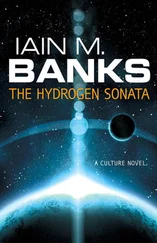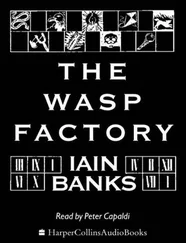They’d come up with a surprise plan of their own. Needle ships were designed to fit through narrow worm-holes, it was that simple. The biggest arteria and the widest portals were a kilometre across, but the average “hole diameter was under fifty metres and a few very old arteria were barely ten metres wide. It took a vast amount of energy and\or matter to make an arteria and its two portals, and it was difficult, expensive and dangerous to expand them once they were emplaced. There was, for the Mercatoria, little point in having a network of super-fast travel connections scattered throughout the galaxy if your ships were too fat to fit, and so the proportions of war craft — the ultimate levers of power for the Mercatoria, just as they had been for all earlier imperia, semimperia and others who had thought to enforce their peace or impose their will on the galactic community over the aeons — were derived from the width of the channels they would have to negotiate.
In the past, some great capital ships could auto-deconstruct to become a shower of smaller, slimmer components which could fit through a wormhole, and were then capable of reassembling themselves at the far end, but this had proved a wasteful way of designing war craft. Needle ships were simpler and cheaper, for all their astounding complexity and cost. The biggest craft in the battle fleet heading from Zenerre to Ulubis were a kilometre long but less than forty metres across the beam. Almost right at the enemy ship, the missile fired by the Mitrailleuse winked out, replaced by a tiny debris field. Signals from the cruiser, Sensors and Status confirmed this.
— That missile snapped a hostile profile before it was picked off, Weapons reported, side-screening the data the missile had plipped back.
— Sceuri ship, Sulcus or Fosse class, one Tactics officer sent.
So they were dealing — at least in that ship — with the Deathspiral, Taince thought. That particular Beyonder group was exclusively Sceuri; waterworlders with a hatred for the Mercatoria in general and those of their own kind who were a part of it in particular (which meant most of them). Renowned for their viciousness and without even the excuse that they were protecting their precious civilian habitats. They didn’t have any, they were almost entirely ship-based. A bunch of piratical terrorists, in other words, just fanatics. And yet as far as anyone knew the Deathspiral hadn’t taken part in the attack on the Ulubis portal.
· So that makes four, not three varieties of Beyonder oper-ating in this volume, the Admiral sent, saying what Taince was thinking.
· Two more and we’ll have the set, she replied.
Back in Tacspace, she watched the Cartouche’s missile curving to meet the twisting trace that was the other nearest hostile. It joined it, overlaying it. A white blink, then an infinitesimal spray of debris, red speckled with green.
— D-three: Hit! Hostile hit!
Taince’s two fellow tacticians aboard the flagship made whooping noises.
· Well done, D-three, said Kisipt.
· Still flare?
· Still flare. Taince ignored the celebratory noises and her own feeling of excitement. She watched Tacspace, listened to the ship chatter, felt the seconds count down.
The fleet was still spreading, the vessels’ courses fanning out like thin stems from a short vase. Taince held off and held off and held off, until she could almost feel Fleet Admiral Kisipt and everybody else getting ready to shout at her.
Forty seconds. She sent,
— De-flare. Pattern-five reverse.
· Copy, said her own helm officer, then the other acknowledgements followed. In Tacspace, the flowering, widening ship tracks immediately started to bunch up again, the distances between them closing.
· C-one: Going to be tight.
But it was doable. They could get back to their earlier formation before they encountered the remains of the Petronel; that was all that mattered for now. Tacspace showed the fleet regrouping smoothly. The view ahead showed the fiercely glowing nebula of wreckage from the Petronel, seeming to spread across the sky as they approached it, encroaching onto the dark, starless tube on either side. She zoomed in, picking out a clear spot near the centre of the debris field, checking it in Tacspace. There.
The two hard contacts winked out, became orange and started to spread. Tacspace was throwing out probability cones, estimating where the ships might be. Ahead, the sky briefly glowed a pale uniform yellow, indicating that the rest of the Beyonder fleet could be anywhere within that volume. Then a scattering of bright red hard contacts firmed up out of the yellow wash, dispersing it.
The fleet re-formed. They were back where they had started. If nothing else, Taince thought, they ought to have confused the Beyonders.
— Pattern Zero, all ships.
Even in the life-pod, she felt the flagship lurch as it braked, manoeuvred and then accelerated again. She watched it all on Tacspace. The fleet was collapsing, thinning, extending itself forwards and back, ship after ship slipping into a single long line, nose to tail.
— BC-four, back down about ten. D-eleven, forward five. B-three and B-two, centre on D-eight. BC-four, maintain there.
Taince watched them all in Tacspace, shuffling, jostling, ordering them into position until they were all lined up.
— Ships of the line, yes, Vice? the Fleet Admiral sent, also watching.
— Sir.
There were no collisions, no botched moves, no drives left running too long, incinerating the craft behind. The line formation came together as smoothly as it ever had in VR sims. The battleship Gisarme led the way, blasting away a few tiny parti-cles left over from the wreck of the Petronel and laying down a stuttered laser barrage to try to intercept any mines, kinetic or otherwise, left in the way.
This was a gamble, too. If it worked they’d be through and away, one after another, charging mob-handed right behind the Gisarme like a long sequence of battering rams. If it didn’t work, there was a chance that first the Gisarme would hit something and then they’d all hit whatever was left of it. Potentially the whole fleet could be wiped out in one long pile-up of cascading collisions. The chances were small — smaller, the simulations indicated, than the risks associated with any of the other manoeuvres — but only because this one included a safety premium due to its assumed unexpectedness, its sheer novelty value. If they’d got that wrong, it was much riskier than all the rest.
The manoeuvre caught the Beyonders unawares. It was profoundly not standard Summed Fleet behaviour. The needle ships were one giant needle now, plunging through the debris field of the wrecked destroyer, firing all around them, scoring a couple of hits on distant hostiles desperately closing. Tacspace showed the lines of fire blazing out from the fleet like spokes from a filament-thin shaft and missiles spinning away like tiny glowing emeralds. The Beyonders were attempting to close, but it was too late. All that the nearest hostile units accomplished was their own destruction. In two minutes the Mercatorial fleet was through without loss, and a minute later its entire fire-pattern was rearward: a swirling skirt of crimson lines combing and coning into the emptying depths of space behind. Any further engagement now would be entirely on their terms, and the fleet’s vastly superior firepower would have the first word, and the last.
· Nice work, Vice. Fleet Admiral Kisipt sounded a little surprised, a little disappointed and moderately impressed. Taince knew that a lot of her fellow officers had wanted a proper battle, but this way had been better, quicker, more elegant. “Nice work’ — from a Voehn; that was real praise.
Читать дальше












